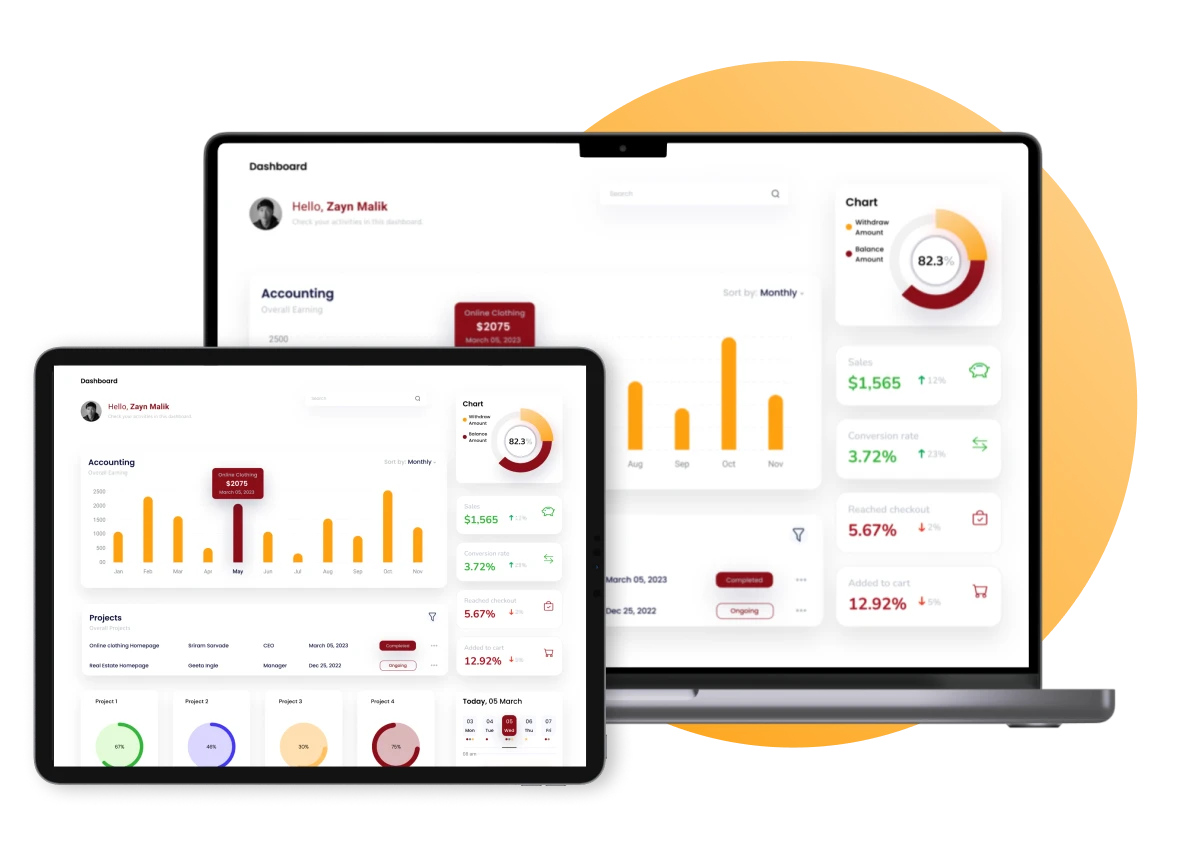The cash ratio measures a company’s ability to pay short-term obligations using cash and equivalents. It evolved from the quick ratio to provide a clearer view of liquidity. With accounting system, businesses can use the cash ratio formula for faster and more accurate financial analysis.
Proper cash ratio interpretation is key to evaluating financial health. Accounting software simplifies calculations like the cash balance formula, helping companies assess liquidity. This ensures they have enough cash to meet liabilities and run operations smoothly, walang abala!
Table of Contents
Key Takeaways
|
Understanding the Cash Ratio Meaning
The cash ratio measures liquidity by comparing cash and equivalents to current liabilities. It’s ideal for assessing if a company can cover debts without selling assets. Understanding the cash ratio meaning ensures businesses can evaluate their financial strength during critical times.
This ratio is crucial during financial stress or credit applications, as it checks liquidity quickly. Using the cash ratio formula or cash and cash equivalents formula simplifies analysis. These tools help businesses compare liabilities and maintain a solid cash balance formula for stability.
In the Philippines, complying with BIR CAS is crucial for accurate reporting. With tools like the cash ratio formula and BIR CAS-approved systems from HashMicro, businesses can analyze liquidity, meet tax regulations, and ensure financial stability with greater efficiency.
Key Advantages of the Cash Ratio
Calculating the cash ratio offers key benefits for businesses, ensuring liquidity security and helping solve financial challenges. By using the cash ratio formula, management can analyze financial health and make strategic decisions to maintain stability and operational efficiency.
- The cash ratio highlights the company’s ability to pay short-term obligations with cash.
- The cash coverage ratio formula helps assess how well a business can cover debts with cash flow.
- Using the cash and cash equivalents formula ensures accurate tracking of liquid assets.
- The cash on hand formula provides clarity on available funds for immediate use.
- Monitoring the cash balance formula ensures consistent financial health over time.
By periodically reviewing these ratios, businesses can prevent liquidity issues, strengthen financial security, and support uninterrupted operations. Proactive financial management, supported by financial ratio analysis, ensures stability and fosters long-term growth.
Limitations of the Cash Ratio
The cash ratio is a useful tool for assessing liquidity, but it has several limitations that businesses must consider. Relying solely on this ratio can lead to an incomplete view of financial health. Understanding these limitations ensures better cash ratio interpretation and decisions.
Key limitations include:
- Excludes receivables or other assets easily convertible to cash.
- May not reflect liquidity accurately for industries with low cash needs.
- Overemphasizes cash reserves, which could hinder growth opportunities.
- Does not account for access to credit or financing options.
- Relies heavily on the cash ratio formula, which focuses narrowly on cash.
To address these limitations, businesses should complement the cash ratio with other metrics like the cash coverage ratio formula or the cash balance formula. This ensures a broader and more accurate understanding of their financial position.
Factors that Impact the Cash Ratio in Businesses
Several factors influence the cash ratio, including industry, economic conditions, growth, high ratio values, and risk. Each plays a significant role in shaping liquidity. Understanding these helps businesses apply the cash ratio formula effectively to assess financial stability and cash flow.
Industry standards vary, with some sectors maintaining lower cash and cash equivalents formula values due to frequent asset purchases. Economic conditions also impact cash flow, as uncertainty often leads businesses to increase their cash balance formula. Fast-growing companies prioritize cash for operational needs.
A cash ratio that’s too high signals inefficient asset use. Businesses should invest excess funds instead of holding cash. For risk, cautious owners save more, while risk-tolerant ones invest surplus cash. Proper cash ratio interpretation ensures balanced financial management.
Tips to Optimize the Cash Ratio
Increase your cash ratio by retaining net income in cash or equivalents. Cutting payment obligations or reducing operating costs can also improve liquidity. If cash is too high, consider using it for long-term investments. Apply the cash ratio formula to manage cash flow effectively.
Understanding the cash ratio meaning is essential for balancing liquidity. Lenders often review a company’s ratios to evaluate financial health. While some focus on the cash coverage ratio, others use the cash on hand formula or quick ratios. Maintaining an optimal ratio builds confidence in financial stability.
Using the cash balance formula ensures your business avoids cash inefficiencies. Too much cash signals missed investment opportunities, while too little increases risk. By interpreting ratios accurately, you can better manage obligations and sustain long-term growth in your business.
Looking to improve financial management? Explore our recommendation article on
Accounting platforms for Philippine businesses. Find tools to simplify bookkeeping, optimize cash flow, and track liquidity effectively. These solutions help sustain growth and ensure better financial stability.
Cash Ratio Formula and Calculation Example
The cash ratio shows a company’s ability to pay off its short-term debts using cash and equivalents. This metric helps assess liquidity without relying on asset sales. Understanding the cash ratio formula and its components ensures better financial planning and decision-making.
Cash ratio formula:
Cash ratio = (cash + cash equivalents) ÷ current liabilities
Example:
A company has $50,000 in cash, $20,000 in cash equivalents, and $70,000 in current liabilities. Using the cash ratio formula,
Cash ratio = ($50,000 + $20,000) ÷ $70,000 = 1.0.
This indicates the company has enough liquidity to cover its immediate obligations.
By applying the cash ratio formula, businesses gain clarity on their short-term financial health. Proper cash ratio interpretation helps them identify whether they need to optimize their cash or allocate it toward investments to maintain financial balance.
How the Cash Ratio Reflects Your Business
The cash ratio is a key liquidity measure that uses only cash and cash equivalents. When the ratio equals 1.0, it means the company has just enough cash to meet all its short-term debts. This balance reflects strong financial management and ensures obligations are covered on time.
If the cash ratio formula gives a value of less than 1.0, the company lacks enough cash or equivalents to pay its short-term obligations. This could signal liquidity issues and may require the business to improve its cash flow or reduce liabilities to avoid financial risks.
When the cash ratio is greater than 1.0, it indicates the company has excess cash after covering its debts. While this reflects a strong cash balance formula, holding too much cash might mean the business is not efficiently investing its resources for growth.
How to Interpret Cash Ratio
Investors and creditors use the cash ratio to assess a company’s financial health. It’s a strong short-term indicator of liquidity. A cash ratio formula result between 0.5 and 1.0 is generally acceptable. A high cash ratio signals that the company has sufficient cash to cover its debts.
The cash ratio gives a conservative view by including only cash and equivalents. Businesses often avoid keeping too much idle cash as it doesn’t generate profits. Using the cash and cash equivalents formula, companies can allocate funds efficiently while maintaining a healthy cash balance formula.
Cash Ratio, Quick Ratio, and Current Ratio Comparison
The cash ratio measures a company’s ability to cover short-term liabilities using only cash and equivalents, offering a conservative view of liquidity. It helps ensure immediate obligations are met without asset liquidation. The cash ratio formula is simple and precise.
Cash ratio = (Cash + Cash Equivalents) ÷ Current Liabilities.
The quick ratio includes cash, receivables, and marketable securities, excluding inventory, to assess liquidity. It provides a broader view than the cash ratio meaning, focusing on assets that can quickly convert to cash. This makes it useful for financial decision-making.
Quick ratio = (Cash + Receivables + Marketable Securities) ÷ Current Liabilities.
The current ratio measures overall liquidity by comparing total current assets, including inventory, to current liabilities. It provides a general view of financial health but may overestimate liquidity if inventory cannot be sold quickly. It complements the cash ratio interpretation.
Current ratio = Current Assets ÷ Current Liabilities.
In conclusion, the cash ratio, quick ratio, and current ratio offer unique liquidity insights. The cash ratio formula focuses on immediate obligations, while the others provide broader views. Using these ratios together ensures a balanced and accurate financial analysis.
Enhance Cash Ratio Insights with HashMicro Accounting Software
Managing your company’s finances is effortless with HashMicro Accounting Software. It simplifies cash ratio formula calculations and automates processes like invoicing and billing. Gain better insights with accurate cash ratio interpretation and tools to improve cash flow and financial stability.
Key features and benefits:
- Invoicing and billing: automate payment tracking for better cash flow management.
- Direct and indirect cash flow reports: get a clear view of liquidity for smarter decisions.
- Bank integrations: easily connect with local banks for smooth transactions.
- Multi-level analytical reporting: compare performance across projects or branches.
- Debt collection tools: speed up cash recovery to maintain financial health.
- Automated currency updates: manage foreign exchange with accuracy and ease.
With these features, HashMicro helps you track cash flow, optimize planning, and simplify operations. It’s a complete solution to improve financial stability. Transform your accounting process today, and schedule a free demo to experience it firsthand!
Conclusion
The cash ratio shows a company’s ability to pay short-term debts using cash and equivalents. It provides a clear view of liquidity. Applying the cash ratio formula helps businesses assess financial health, ensuring they manage cash effectively and maintain stable operations.
Industry, growth, and risk factors impact the cash ratio meaning and interpretation. A high ratio may show unused cash, while a low one highlights liquidity issues. Using tools like the cash coverage ratio formula or cash balance formula ensures a more accurate financial assessment.
Boost financial management with HashMicro Accounting Software. It automates the cash ratio formula, invoicing, and reporting for accurate analysis. Gain better cash ratio interpretation and manage cash flow easily. Book a free demo now and see it in action!
FAQ about Cash Ratio
-
What does an increase in cash ratio mean?
A higher cash ratio indicates the company is well-equipped to cover short-term liabilities with short-term assets. However, in some cases, a lower ratio is more desirable. While a ratio above one shows the company can easily meet its debts, it might also suggest excess cash could be used more efficiently.
-
What if cash ratio is too high?
A higher cash ratio signals lower credit and liquidity risk, but an excessively high ratio may point to mismanagement or inefficient use of capital. Like other liquidity ratios, understanding the cash ratio requires considering the broader context.
-
>Is it better to have a higher cash flow ratio?
The cash flow to net income ratio evaluates how effectively operating cash flow aligns with net income. A higher ratio signifies better efficiency in turning net income into cash, which is considered a favorable outcome.
{
“@context”: “https://schema.org”,
“@type”: “FAQPage”,
“mainEntity”: [{
“@type”: “Question”,
“name”: “What does an increase in cash ratio mean?”,
“acceptedAnswer”: {
“@type”: “Answer”,
“text”: “A higher cash ratio indicates the company is well-equipped to cover short-term liabilities with short-term assets. However, in some cases, a lower ratio is more desirable. While a ratio above one shows the company can easily meet its debts, it might also suggest excess cash could be used more efficiently.”
}
},{
“@type”: “Question”,
“name”: “What if cash ratio is too high?”,
“acceptedAnswer”: {
“@type”: “Answer”,
“text”: “A higher cash ratio signals lower credit and liquidity risk, but an excessively high ratio may point to mismanagement or inefficient use of capital. Like other liquidity ratios, understanding the cash ratio requires considering the broader context.”
}
},{
“@type”: “Question”,
“name”: “Is it better to have a higher cash flow ratio?”,
“acceptedAnswer”: {
“@type”: “Answer”,
“text”: “The cash flow to net income ratio evaluates how effectively operating cash flow aligns with net income. A higher ratio signifies better efficiency in turning net income into cash, which is considered a favorable outcome.”
}
}]
}

























